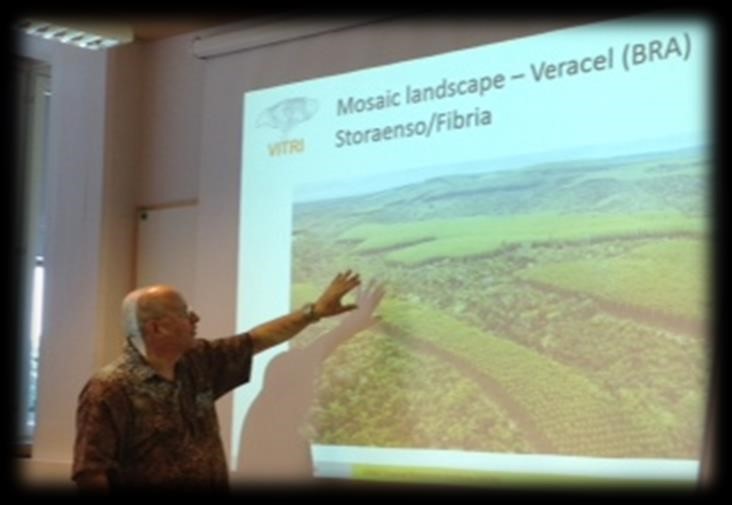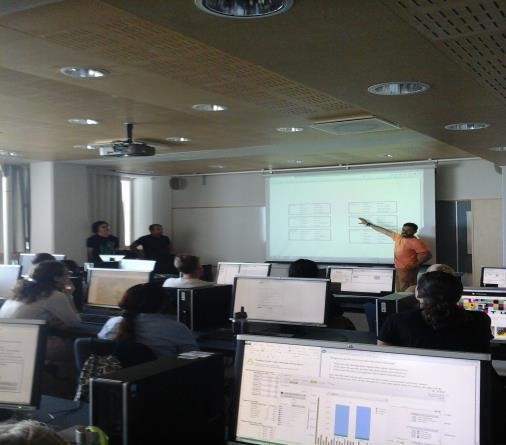First we had the pleasure to listen to Dr. Markku Kanninen’s lecture about plantation forests. The learning objectives covered the purpose/management objectives of plantations, global trends in plantation forestry, and plantations as a part of laandscape. The FAO definition of forests and plantations was used as a base for the presentation.
In the industrial plantation, pine is the most common species (42%) followed by eucalyptus. These species are mainly used as fiber for pulp and paper industry. Plantations also produce timber wood for construction industry, furniture and other purposes. Plantations have grown especially in the USA and China since the 90s. Asia is the region with most plantations, and the plantations areas assumed to grow in the coming decades. However, especially intensively managed “fast wood” plantations are also found in Latin America in great numbers. In the pulp industry the management method is very intensive, including genetically modified species. The aim is to produce large amounts of customized fiber for the industry. The productivity in these plantations may be even 10 times higher than that of the same species in their natural environment.
Some of these plantations reach over 100 000 ha size. However, plantation forestry includes also very different growing schemes and objectives. There are protective plantations that focus on e.g. watershed management and windbreaks. There are also smallholder plantations that may not have very clear management objectives.
After a coffee break, the second lecture was facilitated by Prof Markus Holopainen (University of Helsinki – forestry) on GIS and remote sensing in forest management. During his presentation he gave an overview on the Geographical Information Systems (GIS) in natural resources (inventory, forest management planning, etc). He presented the traditional forest inventory methods in Finland followed by the technologies newly developed. Among them one can cite:
Ø The Airborne Laser Scanning (ALS) is a new technology that enables a leap in the acquisition of detailed spatial geo-information. By using ALS, one can collect geometrically accurate point clouds (X,Y,Z)
Ø The Terrestrial Laser Scanning (TLS) which is a ground-based active imaging method that can rapidly acquire accurate dense 3D points clouds of object surface by laser.
To the questions whether Aircraft or drone are used in ALS, and how data are processed, the lecturer explained that the ALS is not yet in use in Finland and that there tools for processing data (even for example R-Statistic software.
The afternoon marked the first workshop in the program at the GIS room facilitated by Antti Makinen. We were introduced to Optimum Asset Management using IPTIM (Integrated Planning for Timberland Management) software developed by Simosol Company. It has been developed with the aim of offering forest inventory solutions and wood procurement solutions among others with the option of creating a layout of roads to be used in forest management.
Working as individuals, we were availed with user names and passwords to enable hands-on experience on how to manouver the software. The program has the ability to analyze inventory data using parameters like total number of trees, number of height sample trees and site index where the height and volume of different species can be simulated using their respective height and volume equations. It can also model the growth and yield by deriving the volume growth for a stand of trees using volume growth equations formulated for the species in question.
Planning is another key feature of the program as it recommends on yearly silvicultural management options like thinning and harvesting options of a forest based on the desired products. Further it gives estimates of standing stock, annual cost and income of operations.
Finally we were subdivided into 5 groups (based on the already existing 6 groups) to work on CRiSTAL program to be introduced on Monday, 17th August.
Jennifer Rono, Adama Korbo and Noora Simola


